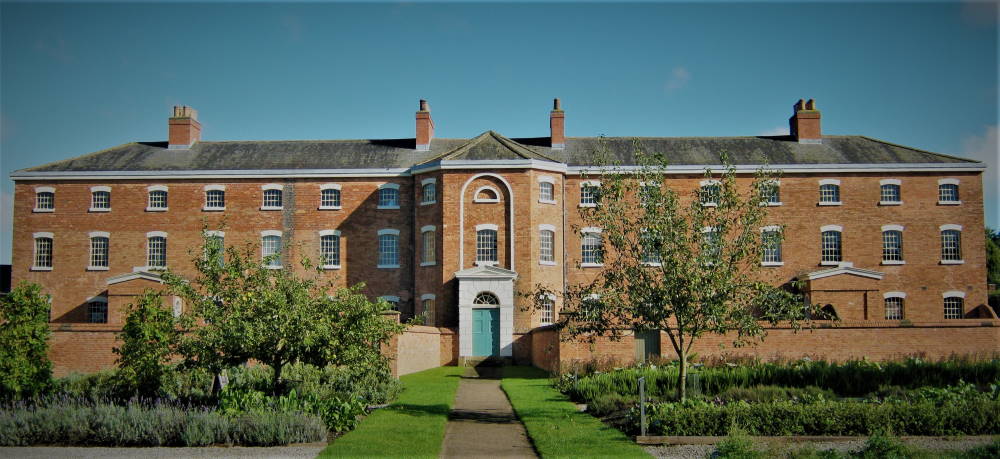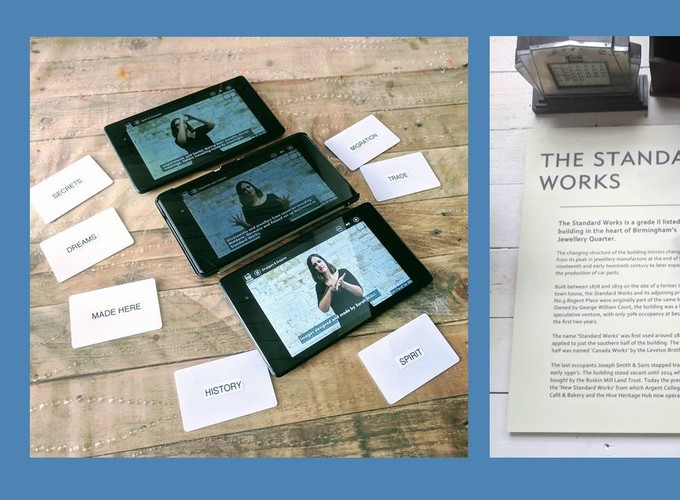Last year, I worked with the amazing National Trust property The Workhouse in Southwell.

I was reminded of this project recently when talking about how I work with Galleries, Libraries, Archives, Museums (+ other art organisations) and that it’s one of many that I had failed to blog about!
Often people come across my museum-work via my free DIY tutorials (either online or through word of mouth). As I’m sure I have mentioned elsewhere these are all open-source – please use & improve! Many museums use these resources without contacting me. Others will drop me an email with questions or just to let me know that they’ve used them successfully somewhere in the world. I’d rather people did email me than get stuck and abandone the tutorials all together – and these questions get added to the general FAQ
This led to me thinking about the different ways I work with museums:
- No contact at all (FREE – obviously)
- Email contact with questions (FREE – although occasionally you might have to wait)
- A few days consultancy (DAY-rate)
- Group workshops over a period of time (Fixed cost)
- Very bespoke custom experience (usually weeks to months of work)
I was interested in seeing how this worked in practice. So, here’s an example of those different levels focused around the NFC-triggered Digital Tour guides.
The Free version
You can find the free version here. It uses a custom Android app that I developed. There was even a level below this without the custom app that used existing off-the-shelf tools – although that wasn’t quite robust enough to put into the hands of visitors.
So grab yourself some NFC-enabled Android phones or tablets, some NFC tags and create some content. You need to install the tags in your venue and then give out the devices to visitors.
What I love about this (and most of the other tutorials) that’s it’s very much a case of start small and take it from there. Once you’ve built your first tour you’ll already be thinking about better content, better tags, a nicer device case etc.

And if you get stuck / need some quick advice drop me an email – I’m normally happy to hear from you!
A few days consultancy
This can be taking the tutorials and delivering a more in-depth version in person. Technologies change fairly rapidly and having the most up-to-date version is very beneficial to the museum.
‘Experience Consultancy’ help with building an experience with the technology. I’ve used each of those tutorials in different ways so just getting together with a museum to plan it out and to share what has and hasn’t worked in the past can speed things up considerably.
‘Technical Consultancy’ help with getting the technology up and running. The tutorials are designed to be straight-forward to use but it doesn’t hurt to have somebody in the room who has set it all up before or who developed the app ;).

Group workshops / Training programmes
I’ve done this in a number of regions around the UK. It is a combination of in-person delivered workshops along with consultancy to assist a number of museums simultaneously. (I was a university lecturer for 10 years so it’s nice to get back in the classroom occasionally.) It’s about upskilling museums so that they can create, update and maintain their own digital interactive / experiences.
This allows a handful of museums to go through the training programme together, meeting several times over a number of months – sharing their development as they go and at a formal sharing session as the finale!
These have worked really well – who doesn’t leave a talk with lots of great ideas and promises to build something, but then the realities of everyday life get in the way. By committing to a series of workshops and some kind of end sharing event the group motivates each other to produce something valuable and tangible by the end of it.
And the museum staff & volunteers enjoy the social aspect and there’s a certain safety in numbers while playing with new technology.
Hmmm… I don’t have an example of running the Digital Tour Guide tutorial for many museums at the same time. I’ve got similar examples of Audio Tour Guides (such as the Babbling Beasts) or Touchscreens using PowerPoint.
Very Bespoke Custom Experiences
These are usually larger, focused pieces of work for clients with larger budgets often as the result of receiving successful funding. These can be on any topic but having the DIY tutorials as a starting point can be invaluable. It’s much easier for clients to imagine what they want when they can see a simpler version of it.
It’s possible to mock-up an experience using the free-version and even test with an audience before beginning work designing a bespoke version.
The flip side to this is that if you show someone a (mostly) working prototype it can make it more difficult to communicate that there’s actually a huge amount of work in order to build a final version.

A great example of this bespoke work is with the National Trust property ‘The Workhouse’. And I talk about that in more detail in part 2 of this post.
